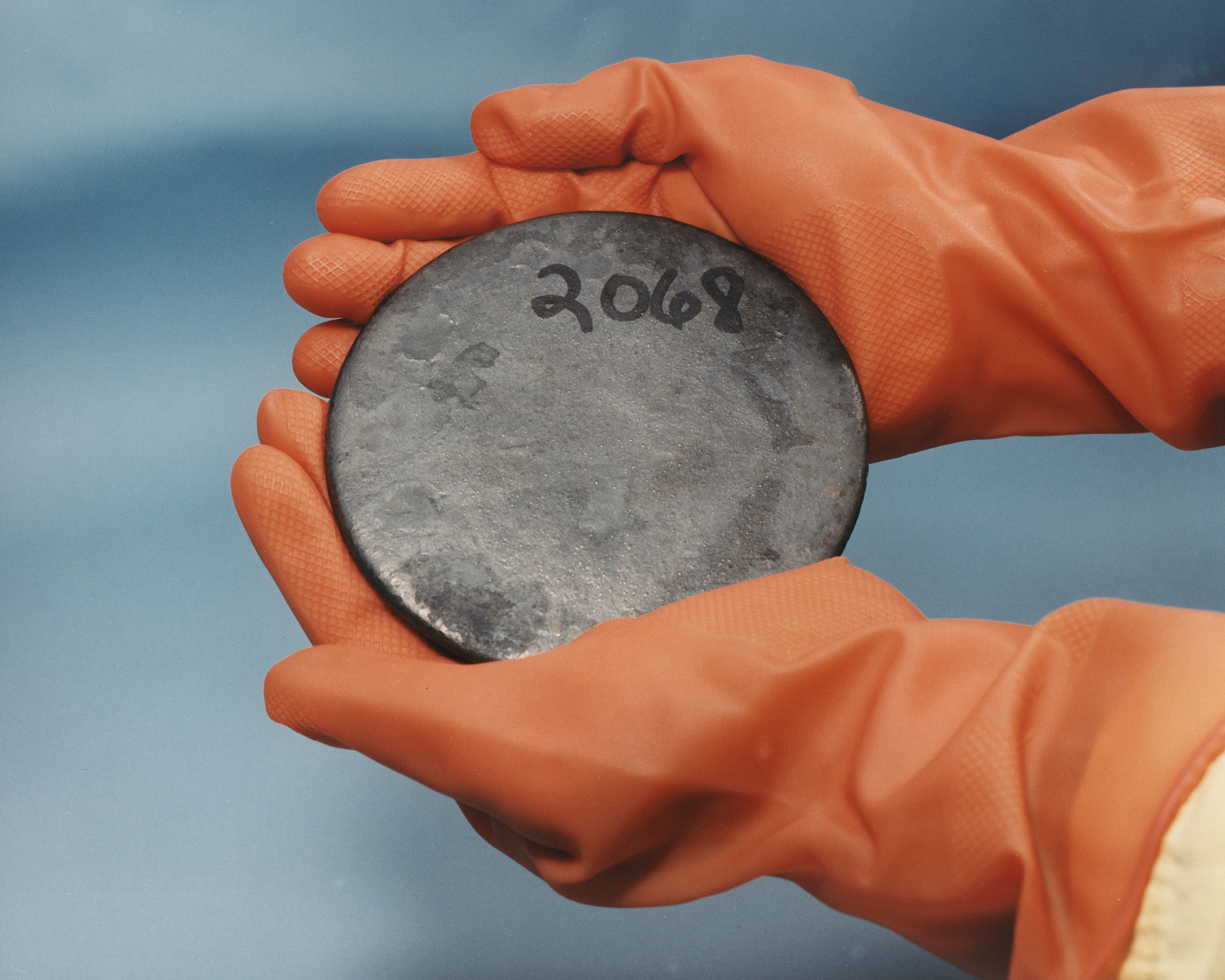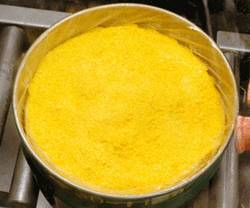|
U-235
Uranium-235 ( or U-235) is an isotope of uranium making up about 0.72% of natural uranium. Unlike the predominant isotope uranium-238, it is fissile, i.e., it can sustain a nuclear chain reaction. It is the only fissile isotope that exists in nature as a primordial nuclide. Uranium-235 has a half-life of 703.8 million years. It was discovered in 1935 by Arthur Jeffrey Dempster. Its fission cross section for slow thermal neutrons is about barns. For fast neutrons it is on the order of 1 barn. Most neutron absorptions induce fission, though a minority (about 15%) result in the formation of uranium-236. Fission properties The fission of one atom of uranium-235 releases () inside the reactor. That corresponds to 19.54 TJ/ mol, or 83.14 TJ/kg. [...More Info...] [...Related Items...] OR: [Wikipedia] [Google] [Baidu] |
Nuclear Weapon Design
Nuclear weapons design are physical, chemical, and engineering arrangements that cause the physics package of a nuclear weapon to detonate. There are three existing basic design types: # Pure fission weapons are the simplest, least technically demanding, were the first nuclear weapons built, and so far the only type ever used in warfare, by the United States on Empire of Japan, Japan in World War II. # Boosted fission weapons are fission weapons that use nuclear fusion reactions to generate high-energy neutrons that accelerate the fission chain reaction and increase its efficiency. Boosting can more than double the weapon's fission energy yield. # Staged thermonuclear weapons are arrangements of two or more "stages", most usually two, where the weapon derives a significant fraction of its energy from nuclear fusion (as well as, usually, nuclear fission), . The first stage is typically a boosted fission weapon (except for the earliest thermonuclear weapons, which used a pure fission ... [...More Info...] [...Related Items...] OR: [Wikipedia] [Google] [Baidu] |
Fissile
In nuclear engineering, fissile material is material that can undergo nuclear fission when struck by a neutron of low energy. A self-sustaining thermal Nuclear chain reaction#Fission chain reaction, chain reaction can only be achieved with fissile material. The predominant Neutron temperature, neutron energy in a system may be typified by either slow neutrons (i.e., a thermal system) or fast neutrons. Fissile material can be used to fuel thermal-neutron reactors, fast-neutron reactors and nuclear explosives. Fissile vs fissionable The term ''fissile'' is distinct from ''fissionable''. A nuclide that can undergo nuclear fission (even with a low probability) after capturing a neutron of high or low energy is referred to as ''fissionable''. A fissionable nuclide that can undergo fission with a high probability after capturing a low-energy thermal neutron is referred to as ''fissile''. Fissionable materials include those (such as uranium-238) for which fission can be induce ... [...More Info...] [...Related Items...] OR: [Wikipedia] [Google] [Baidu] |
Research Reactors
Research reactors are nuclear fission-based nuclear reactors that serve primarily as a neutron source. They are also called non-power reactors, in contrast to power reactors that are used for electricity production, heat generation, or maritime propulsion. Purpose The neutrons produced by a research reactor are used for neutron scattering, non-destructive testing, analysis and testing of materials, production of radioisotopes, research and public outreach and education. Research reactors that produce radioisotopes for medical or industrial use are sometimes called isotope reactors. Reactors that are optimised for beamline experiments nowadays compete with spallation sources. Technical aspects Research reactors are simpler than power reactors and operate at lower temperatures. They need far less fuel, and far less fission products build up as the fuel is used. On the other hand, their fuel requires more highly enriched uranium, typically up to 20% U-235, although some use 93% ... [...More Info...] [...Related Items...] OR: [Wikipedia] [Google] [Baidu] |
Nuclear Chain Reaction
In nuclear physics, a nuclear chain reaction occurs when one single nuclear reaction causes an average of one or more subsequent nuclear reactions, thus leading to the possibility of a self-propagating series or "positive feedback loop" of these reactions. The specific nuclear reaction may be the fission of heavy isotopes (e.g., uranium-235, 235U). A nuclear chain reaction releases several million times more energy per reaction than any chemical reaction. History Chemical chain reactions were first proposed by German chemist Max Bodenstein in 1913, and were reasonably well understood before nuclear chain reactions were proposed. It was understood that chemical chain reactions were responsible for exponentially increasing rates in reactions, such as produced in chemical explosions. The concept of a nuclear chain reaction was reportedly first hypothesized by Hungarian scientist Leó Szilárd on September 12, 1933. Szilárd that morning had been reading in a London paper of an ... [...More Info...] [...Related Items...] OR: [Wikipedia] [Google] [Baidu] |
Critical Mass
In nuclear engineering, critical mass is the minimum mass of the fissile material needed for a sustained nuclear chain reaction in a particular setup. The critical mass of a fissionable material depends upon its nuclear properties (specifically, its nuclear fission cross-section), density, shape, enrichment, purity, temperature, and surroundings. It is an important parameter of a nuclear reactor core or nuclear weapon. The concept is important in nuclear weapon design. Critical size is the minimum size of the fissile material needed for a sustained nuclear chain reaction in a particular setup. If the size of the reactor core is less than a certain minimum, too many fission neutrons escape through its surface and the chain reaction is not sustained. Criticality When a nuclear chain reaction in a mass of fissile material is self-sustaining but not growing, the mass is said to be in a critical state, in which there is no increase or decrease in power, temperature, or ... [...More Info...] [...Related Items...] OR: [Wikipedia] [Google] [Baidu] |
Nuclear Marine Propulsion
Nuclear marine propulsion is Marine propulsion, propulsion of a ship or submarine with heat provided by a nuclear reactor. The power plant heats water to produce steam for a turbine used to turn the ship's propeller through a Transmission (mechanics), gearbox or through an electric generator and motor. Nuclear propulsion is used primarily within naval warships such as nuclear submarines and supercarriers. A small number of experimental civil nuclear ships have been built. Compared to oil- or coal-fuelled ships, nuclear propulsion offers the advantage of very long intervals of operation before refueling. All the fuel is contained within the nuclear reactor, so no cargo or supplies space is taken up by fuel, nor is space taken up by exhaust stacks or combustion air intakes. The low fuel cost is offset by high operating costs and investment in infrastructure, however, so nearly all nuclear-powered vessels are military. Power plants Basic operation of naval ship or submarine Most na ... [...More Info...] [...Related Items...] OR: [Wikipedia] [Google] [Baidu] |
Highly Enriched Uranium
Enriched uranium is a type of uranium in which the percent composition of uranium-235 (written 235U) has been increased through the process of isotope separation. Naturally occurring uranium is composed of three major isotopes: uranium-238 (238U with 99.2732–99.2752% natural abundance), uranium-235 (235U, 0.7198–0.7210%), and uranium-234 (234U, 0.0049–0.0059%). 235U is the only nuclide existing in nature (in any appreciable amount) that is fissile with thermal neutrons. Enriched uranium is a critical component for both civil nuclear power generation and military nuclear weapons. Low-enriched uranium (20% 235U, typically >85%) is used for the cores of many nuclear weapons, as well as compact reactors for naval propulsion and research, as well as breeder reactors. There are about 2,000 tonnes of highly enriched uranium in the world. Enrichment methods were first developed on a large scale by the Manhattan Project. Its gaseous diffusion method was used in the 1940s ... [...More Info...] [...Related Items...] OR: [Wikipedia] [Google] [Baidu] |
Low Enriched Uranium
Enriched uranium is a type of uranium in which the percent composition of uranium-235 (written 235U) has been increased through the process of isotope separation. Naturally occurring uranium is composed of three major isotopes: uranium-238 (238U with 99.2732–99.2752% natural abundance), uranium-235 (235U, 0.7198–0.7210%), and uranium-234 (234U, 0.0049–0.0059%). 235U is the only nuclide existing in nature (in any appreciable amount) that is fissile with thermal neutrons. Enriched uranium is a critical component for both civil nuclear power generation and military nuclear weapons. Low-enriched uranium (20% 235U, typically >85%) is used for the cores of many nuclear weapons, as well as compact reactors for naval propulsion and research, as well as breeder reactors. There are about 2,000 tonnes of highly enriched uranium in the world. Enrichment methods were first developed on a large scale by the Manhattan Project. Its gaseous diffusion method was used in the 1940s a ... [...More Info...] [...Related Items...] OR: [Wikipedia] [Google] [Baidu] |
Isotope Of Uranium
Uranium (U) is a naturally occurring radioactive element (radioelement) with no stable isotopes. It has two primordial isotopes, uranium-238 and uranium-235, that have long half-lives and are found in appreciable quantity in Earth's crust. The decay product uranium-234 is also found. Other isotopes such as uranium-233 have been produced in breeder reactors. In addition to isotopes found in nature or nuclear reactors, many isotopes with far shorter half-lives have been produced, ranging from U to U (except for U). The standard atomic weight of natural uranium is . Natural uranium consists of three main isotopes, U (99.2739–99.2752% natural abundance), U (0.7198–0.7202%), and U (0.0050–0.0059%). All three isotopes are radioactive (i.e., they are radioisotopes), and the most abundant and stable is uranium-238, with a half-life of (about the age of the Earth). Uranium-238 is an alpha emitter, decaying through the 18-member uranium series into lead-206. The actinium series, deca ... [...More Info...] [...Related Items...] OR: [Wikipedia] [Google] [Baidu] |
Krypton
Krypton (from 'the hidden one') is a chemical element; it has symbol (chemistry), symbol Kr and atomic number 36. It is a colorless, odorless noble gas that occurs in trace element, trace amounts in the Earth's atmosphere, atmosphere and is often used with other rare gases in fluorescent lamps. Krypton is chemically inert. Krypton, like the other noble gases, is used in lighting and photography. Krypton light has many spectral lines, and krypton Plasma (physics), plasma is useful in bright, high-powered gas lasers (krypton ion laser, ion and excimer laser, excimer lasers), each of which resonates and amplifies a single spectral line. krypton fluoride laser, Krypton fluoride also makes a useful laser medium. From 1960 to 1983, the history of the metre#Krypton standard, official definition of the metre was based on the wavelength of one spectral line of krypton-86, because of the high power and relative ease of operation of krypton discharge tubes. History Krypton was discovere ... [...More Info...] [...Related Items...] OR: [Wikipedia] [Google] [Baidu] |
Thermal Neutron
The neutron detection temperature, also called the neutron energy, indicates a free neutron's kinetic energy, usually given in electron volts. The term ''temperature'' is used, since hot, thermal and cold neutrons are moderated in a medium with a certain temperature. The neutron energy distribution is then adapted to the Maxwell distribution known for thermal motion. Qualitatively, the higher the temperature, the higher the kinetic energy of the free neutrons. The momentum and wavelength of the neutron are related through the de Broglie relation. The long wavelength of slow neutrons allows for the large cross section. Neutron energy distribution ranges The precise boundaries of neutron energy ranges are not well defined, and differ between sources, but some common names and limits are given in the following table. The following is a detailed classification: Thermal A thermal neutron is a free neutron with a kinetic energy of about 0.025 eV (about 4.0×10−21 J or ... [...More Info...] [...Related Items...] OR: [Wikipedia] [Google] [Baidu] |







